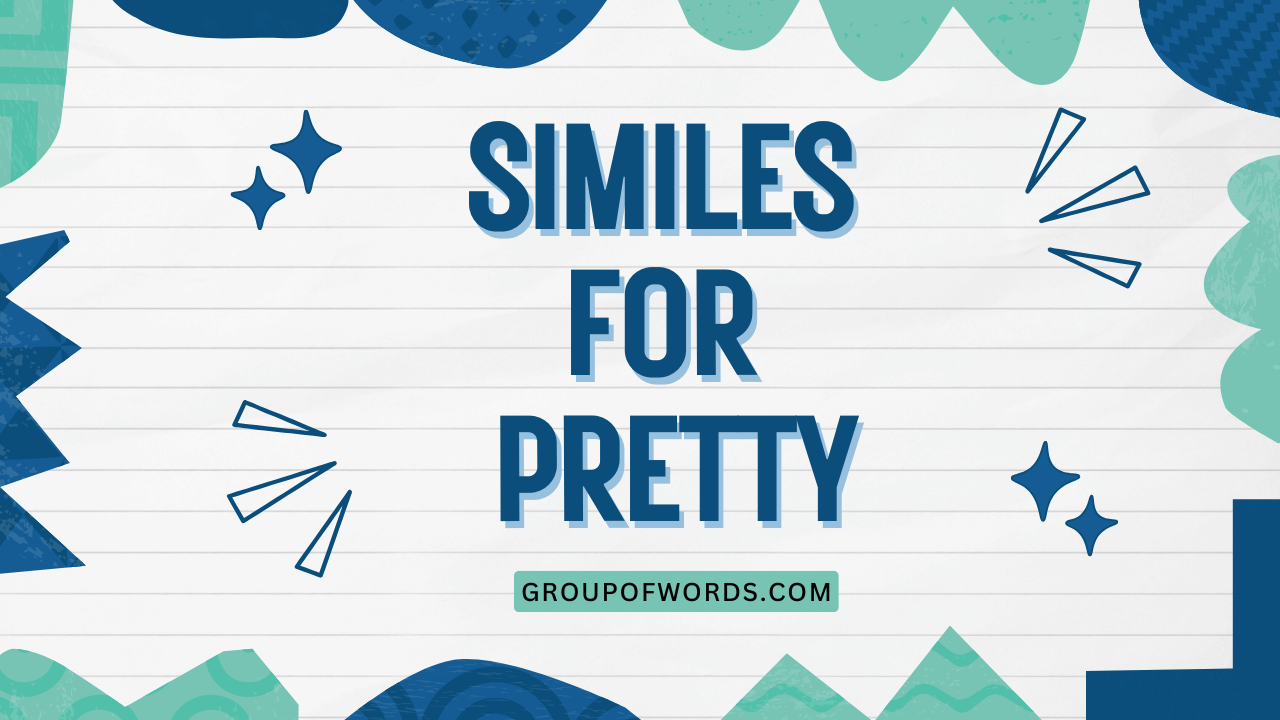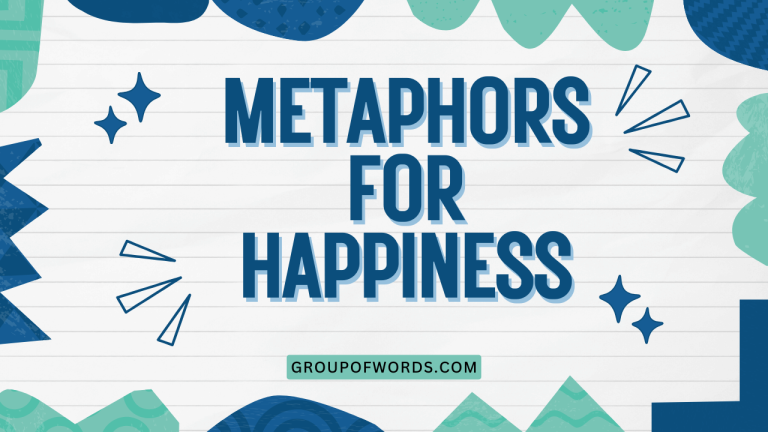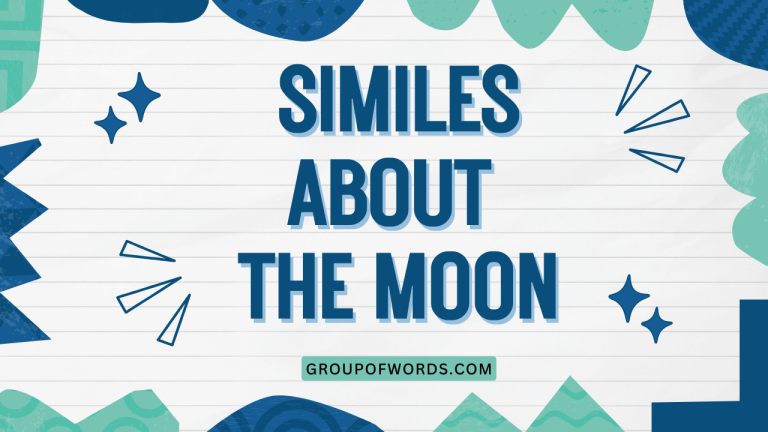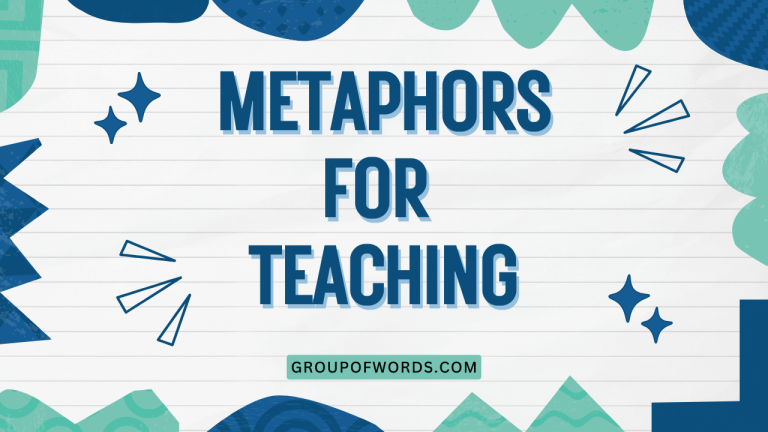Similes for Pretty: A Grammatical Guide
Understanding similes is crucial for enriching your writing and enhancing your descriptive abilities. Similes allow you to draw vivid comparisons, making your language more engaging and memorable.
This article will focus specifically on similes that describe beauty or attractiveness, offering a comprehensive guide for English language learners and native speakers alike. Whether you’re aiming to improve your creative writing, better understand literature, or simply expand your vocabulary, this guide will provide you with the tools and knowledge you need to master the art of using similes to describe prettiness.
We’ll explore various examples, structural breakdowns, usage rules, and practice exercises to ensure a thorough understanding of the topic.
Table of Contents
- Introduction
- Definition of Simile
- Structural Breakdown of Similes
- Types of Similes for Pretty
- Examples of Similes for Pretty
- Usage Rules for Similes
- Common Mistakes When Using Similes
- Practice Exercises
- Advanced Topics in Simile Usage
- Frequently Asked Questions
- Conclusion
Definition of Simile
A simile is a figure of speech that compares two unlike things using the words “like” or “as.” It is a type of figurative language that enhances descriptions by creating a vivid image in the reader’s mind. Unlike metaphors, which directly state that one thing *is* another, similes suggest a similarity or resemblance between two things.
Similes are essential tools for writers and speakers aiming to add color, depth, and clarity to their language.
The primary function of a simile is to make descriptions more relatable and understandable. By comparing something unfamiliar to something familiar, similes help the audience grasp the intended meaning or feeling more easily.
In the context of describing someone as “pretty,” similes can evoke specific aspects of their beauty, such as their complexion, eyes, smile, or overall appearance. Effective similes not only describe but also add emotional resonance to the description.
Similes can be found in various contexts, from everyday conversations to literature, poetry, and advertising. They are frequently used to emphasize certain qualities or characteristics.
For example, describing someone’s eyes as “blue as the ocean” not only conveys the color but also evokes a sense of depth, vastness, and calm. Similes are versatile tools that can be adapted to suit different styles and purposes, making them an invaluable part of the English language.
Structural Breakdown of Similes
The basic structure of a simile involves three key elements: the subject being described, the comparing word (“like” or “as”), and the object to which the subject is being compared. Understanding this structure is crucial for creating effective and grammatically correct similes.
Let’s break down each element:
Subject
This is the person, thing, or idea that is being described. In the context of “similes for pretty,” the subject is usually the person whose beauty is being emphasized.
The subject sets the focus of the comparison and guides the simile’s overall meaning. For instance, in the simile “She is as radiant as the sun,” “she” is the subject.
Comparing Word
The comparing word is either “like” or “as.” These words explicitly signal that a comparison is being made, distinguishing similes from metaphors. “Like” and “as” are interchangeable in most cases, although the choice between them can sometimes depend on the rhythm or flow of the sentence.
For example, “as” is often used when the comparison involves an adjective, while “like” can be used more broadly.
Object of Comparison
This is the person, thing, or idea to which the subject is being compared. The object of comparison should share a relevant characteristic with the subject, allowing the simile to create a meaningful and understandable connection.
In the simile “Her smile is like sunshine,” “sunshine” is the object of comparison, highlighting the warmth and brightness of her smile.
The general formula for a simile is: Subject + Verb + “like” or “as” + Object of Comparison. This formula provides a framework for constructing grammatically sound and effective similes. By understanding each element and how they work together, you can create similes that are both descriptive and evocative.
Types of Similes for Pretty
Similes used to describe beauty can be categorized based on the specific aspect of prettiness they highlight. These categories can help you choose the most appropriate simile for the particular quality you want to emphasize.
Here are some common types:
Similes Describing Complexion
These similes focus on the skin’s appearance, including its color, texture, and overall radiance. Examples include comparisons to natural elements like flowers, precious stones, or even food items known for their smooth texture or appealing color.
These similes often evoke a sense of purity, health, and vitality.
Similes Describing Eyes
Eyes are often considered windows to the soul, and similes describing them can be particularly evocative. These similes might focus on the color, shape, sparkle, or expressiveness of the eyes, drawing comparisons to elements like the ocean, stars, or precious gems.
The goal is to capture the captivating and alluring quality of the eyes.
Similes Describing Smiles
A smile can light up a room, and similes describing smiles often focus on their warmth, brightness, and infectiousness. Common comparisons include sunshine, blooming flowers, or even the gentle curve of a rainbow.
These similes aim to convey the positive and uplifting effect of a beautiful smile.
Similes Describing Overall Appearance
These similes take a broader approach, describing the overall beauty and attractiveness of a person. They might focus on elegance, grace, or a harmonious combination of features.
Comparisons can be made to works of art, natural landscapes, or even mythical figures known for their beauty. The goal is to capture the essence of the person’s overall appeal.
Examples of Similes for Pretty
This section provides a wide range of examples of similes used to describe beauty, organized by the categories discussed above. Each example is designed to illustrate how similes can be used to create vivid and descriptive language.
Examples Describing Complexion
The following table provides 30 examples of similes focusing on complexion, showcasing the diversity and richness of the English language in describing skin beauty.
| Simile | Explanation |
|---|---|
| Her skin was as smooth as silk. | Highlights the softness and texture of the skin. |
| Her complexion was like porcelain. | Emphasizes the flawless and delicate nature of her skin. |
| Her skin glowed like a pearl. | Suggests a radiant and luminous complexion. |
| Her cheeks were as rosy as a blooming rose. | Highlights the healthy and vibrant color of her cheeks. |
| Her skin felt like velvet. | Emphasizes the smoothness and softness of the skin. |
| Her complexion was as clear as crystal. | Suggests purity and flawlessness. |
| Her skin was like honey in the sunlight. | Evokes a warm, golden, and attractive complexion. |
| Her skin was as soft as a baby’s. | Highlights the delicate and tender nature of her skin. |
| Her skin was as bright as a new penny. | Suggests a fresh and radiant complexion. |
| Her skin was like a canvas, smooth and unblemished. | Emphasizes the perfect texture and clarity of her skin. |
| Her complexion was as radiant as the morning sun. | Highlights the brightness and health of her skin. |
| Her skin was as flawless as marble. | Suggests a perfect and unblemished complexion. |
| Her complexion was like fresh cream. | Emphasizes the smoothness and richness of her skin. |
| Her skin was as clear as spring water. | Suggests purity and cleanliness. |
| Her skin glowed like moonlight. | Evokes a soft, ethereal radiance. |
| Her skin was as smooth as glass. | Highlights the fine and flawless texture. |
| Her complexion was like a peach. | Emphasizes the soft color and smooth texture. |
| Her skin was as radiant as gold. | Suggests a bright and valuable complexion. |
| Her skin shined like polished amber. | Evokes a warm and inviting glow. |
| Her skin was as soft as a petal. | Highlights the delicate and tender nature. |
| Her complexion was as even as sand. | Suggests uniformity and balance. |
| Her skin was like dew on a leaf. | Emphasizes freshness and purity. |
| Her skin was as bright as the stars. | Suggests a radiant and luminous complexion. |
| Her skin felt like a cool breeze. | Highlights the refreshing and smooth sensation. |
| Her complexion was as clear as the sky. | Suggests vastness and purity. |
| Her skin was like a freshly fallen snow. | Evokes a sense of purity and whiteness. |
| Her skin was as smooth as a seashell. | Highlights the fine and flawless texture. |
| Her complexion was like a sunlit meadow. | Emphasizes the brightness and openness. |
| Her skin was as radiant as a diamond. | Suggests a bright and valuable complexion. |
| Her skin was like liquid gold. | Evokes a warm, golden, and attractive complexion. |
Examples Describing Eyes
The following table offers 30 similes that focus on describing the beauty of eyes. Each simile aims to capture the unique allure and expressiveness of this vital feature.
| Simile | Explanation |
|---|---|
| Her eyes were as blue as the summer sky. | Highlights the clear and bright color of her eyes. |
| Her eyes sparkled like diamonds. | Emphasizes the brilliance and liveliness of her eyes. |
| Her eyes were like pools of melted chocolate. | Suggests a warm, inviting, and rich color. |
| Her eyes shone like stars. | Highlights the bright and captivating nature of her eyes. |
| Her eyes were as green as emeralds. | Emphasizes the vibrant and precious color. |
| Her eyes were like the deep sea. | Suggests depth, mystery, and intensity. |
| Her eyes were as bright as headlights. | Highlights the intense and focused gaze. |
| Her eyes were like liquid sapphires. | Evokes a rich, deep blue color and preciousness. |
| Her eyes were as warm as the sun. | Highlights the comforting and inviting nature of her gaze. |
| Her eyes were like two burning coals. | Emphasizes the intensity and passion in her eyes. |
| Her eyes were as clear as a mountain stream. | Suggests purity, clarity, and freshness. |
| Her eyes were like a cat’s, mysterious and knowing. | Highlights the enigmatic and perceptive nature of her eyes. |
| Her eyes were as soft as a doe’s. | Emphasizes gentleness and innocence. |
| Her eyes were like windows to her soul. | Suggests the transparency and expressiveness of her eyes. |
| Her eyes were as deep as the ocean. | Highlights the endless depth and mystery. |
| Her eyes shone like polished obsidian. | Evokes a dark, reflective, and intense gaze. |
| Her eyes were as bright as lightning. | Highlights the sudden and striking impact of her gaze. |
| Her eyes were like hazel pools reflecting the forest. | Suggests a natural, earthy color and depth. |
| Her eyes were as gentle as a summer breeze. | Emphasizes the calming and soothing nature of her gaze. |
| Her eyes were like the night sky, full of stars. | Highlights the endless beauty and wonder. |
| Her eyes were as piercing as a hawk’s. | Suggests sharp focus and intensity. |
| Her eyes were like amber jewels. | Evokes a warm, golden color and preciousness. |
| Her eyes were as captivating as a siren’s song. | Highlights the alluring and enchanting nature of her gaze. |
| Her eyes were like a calm lake reflecting the sky. | Suggests peace, tranquility, and depth. |
| Her eyes were as expressive as a painting. | Emphasizes the ability to convey emotions. |
| Her eyes shone like distant galaxies. | Evokes a sense of vastness and wonder. |
| Her eyes were as inviting as a warm fire. | Highlights the comforting and welcoming nature of her gaze. |
| Her eyes were like deep, mysterious caves. | Suggests hidden depths and secrets. |
| Her eyes were as radiant as the dawn. | Emphasizes the brightness and freshness. |
| Her eyes were like sparkling amethyst. | Evokes a rich, purple color and beauty. |
Examples Describing Smiles
The following table provides 30 examples of similes focusing on describing the beauty of a smile. These similes capture the warmth, radiance, and overall positive impact of a beautiful smile.
| Simile | Explanation |
|---|---|
| Her smile was like sunshine on a cloudy day. | Highlights the warmth and brightness of her smile. |
| Her smile was as radiant as the sun. | Emphasizes the powerful and illuminating effect of her smile. |
| Her smile was like a blooming flower. | Suggests beauty, growth, and freshness. |
| Her smile was as warm as a summer breeze. | Highlights the gentle and comforting nature of her smile. |
| Her smile was like a ray of hope. | Emphasizes the positive and uplifting effect of her smile. |
| Her smile was as bright as a lighthouse. | Suggests guidance, clarity, and strength. |
| Her smile was like a gentle melody. | Highlights the harmonious and pleasant nature of her smile. |
| Her smile was as infectious as a yawn. | Emphasizes the ability to spread joy and positivity. |
| Her smile was like a sunrise. | Suggests new beginnings, hope, and beauty. |
| Her smile was as sweet as honey. | Highlights the delightful and pleasing nature of her smile. |
| Her smile was like a warm embrace. | Emphasizes the comforting and welcoming nature of her smile. |
| Her smile was as captivating as a work of art. | Suggests beauty, skill, and emotional depth. |
| Her smile was like the first day of spring. | Highlights renewal, freshness, and joy. |
| Her smile was as genuine as a child’s laughter. | Emphasizes sincerity and innocence. |
| Her smile was like a burst of confetti. | Suggests celebration, joy, and excitement. |
| Her smile was as inviting as a cozy fire. | Highlights warmth, comfort, and welcome. |
| Her smile was like a refreshing rain. | Emphasizes revitalization and clarity. |
| Her smile was as pure as a mountain stream. | Suggests cleanliness, innocence, and vitality. |
| Her smile was like a gentle song. | Highlights the soothing and harmonious quality. |
| Her smile was as mesmerizing as a starry night. | Emphasizes wonder, beauty, and depth. |
| Her smile was like a beacon in the darkness. | Suggests guidance, hope, and clarity. |
| Her smile was as comforting as a mother’s hug. | Highlights security, warmth, and love. |
| Her smile was like a gift. | Emphasizes the value and joy it brings. |
| Her smile was as uplifting as a gospel choir. | Suggests joy, inspiration, and community. |
| Her smile was like a secret garden. | Highlights mystery, beauty, and tranquility. |
| Her smile was as enchanting as a fairy tale. | Emphasizes magic, wonder, and delight. |
| Her smile was like a warm cup of cocoa. | Suggests comfort, warmth, and sweetness. |
| Her smile was as radiant as a full moon. | Highlights brightness, serenity, and beauty. |
| Her smile was like a gentle whisper. | Emphasizes softness, intimacy, and kindness. |
| Her smile was as precious as a rare gem. | Suggests value, beauty, and uniqueness. |
Examples Describing Overall Appearance
The following table presents 30 similes that describe overall beauty. These similes aim to capture the holistic attractiveness and grace of a person.
| Simile | Explanation |
|---|---|
| She was as graceful as a swan. | Highlights elegance and fluidity of movement. |
| She was as beautiful as a painting. | Emphasizes artistic perfection and aesthetic appeal. |
| She was like a breath of fresh air. | Suggests revitalization, purity, and welcome. |
| She was as radiant as a goddess. | Highlights divine beauty and luminosity. |
| She was like a dream come true. | Emphasizes the ideal and desirable nature of her beauty. |
| She was as elegant as a queen. | Suggests sophistication, poise, and refinement. |
| She was like a vision of loveliness. | Highlights the stunning and captivating nature of her beauty. |
| She was as captivating as a siren. | Emphasizes the alluring and enchanting effect of her presence. |
| She was like a walking masterpiece. | Suggests artistic perfection and uniqueness. |
| She was as stunning as a sunset. | Highlights the breathtaking and awe-inspiring nature of her beauty. |
| She was like a delicate flower. | Emphasizes fragility, beauty, and grace. |
| She was as enchanting as a fairy. | Suggests magic, wonder, and delight. |
| She was like a ray of sunshine in a dark room. | Highlights her ability to brighten and uplift. |
| She was as mesmerizing as a dancer. | Emphasizes grace, skill, and captivating movement. |
| She was like a gentle melody in a chaotic world. | Suggests peace, harmony, and solace. |
| She was as radiant as the stars in the night sky. | Highlights beauty, brilliance, and wonder. |
| She was like a precious gem, rare and exquisite. | Emphasizes value, uniqueness, and beauty. |
| She was as alluring as a forbidden fruit. | Suggests temptation, desire, and intrigue. |
| She was like a gentle breeze on a hot day. | Highlights refreshment, comfort, and relief. |
| She was as ethereal as a cloud. | Emphasizes lightness, delicacy, and otherworldliness. |
| She was like a muse, inspiring creativity and beauty. | Suggests inspirational power and aesthetic influence. |
| She was as poised as a ballerina. | Highlights balance, grace, and control. |
| She was like a dream from which one never wants to wake. | Emphasizes the ideal and pleasurable nature of her presence. |
| She was as radiant as a bride on her wedding day. | Suggests joy, beauty, and new beginnings. |
| She was like a symphony of beauty. | Highlights harmony, complexity, and aesthetic richness. |
| She was as unforgettable as a first love. | Emphasizes the lasting impact and significance of her beauty. |
| She was like a sunrise over a tranquil sea. | Suggests peace, beauty, and new beginnings. |
| She was as enchanting as a storybook princess. | Highlights magic, charm, and grace. |
| She was like a poem written in starlight. | Emphasizes beauty, artistry, and wonder. |
| She was as timeless as a classic novel. | Suggests enduring beauty and significance. |
Usage Rules for Similes
Using similes effectively requires adhering to certain rules to ensure clarity, relevance, and impact. While similes offer creative freedom, understanding these guidelines can help you avoid common pitfalls and create more compelling descriptions.
Relevance
The comparison made in a simile should be relevant and logical. The object of comparison should share a meaningful characteristic with the subject being described.
Avoid comparisons that are arbitrary or nonsensical, as they can confuse or distract the reader. For example, “Her smile was like a rusty nail” is an ineffective simile because there is no clear or positive connection between a smile and a rusty nail.
Clarity
Similes should be clear and easy to understand. Avoid using obscure or overly complex objects of comparison that the reader may not be familiar with.
The goal is to enhance understanding, not to create confusion. For instance, instead of saying “Her eyes were as cerulean as a lanthanide compound,” it would be clearer to say “Her eyes were as blue as the summer sky.”
Originality
While some common similes can be effective, striving for originality can make your writing more engaging and memorable. Overused similes, such as “as pretty as a picture,” can feel cliché and lack impact.
Try to think of fresh and creative comparisons that will surprise and delight the reader. For example, instead of “Her skin was as smooth as silk,” you might say “Her skin was as smooth as polished marble.”
Context
The appropriateness of a simile can depend on the context in which it is used. Consider the tone, style, and audience of your writing when choosing a simile.
A simile that is suitable for a romantic poem may not be appropriate for a formal business report. Be mindful of the overall effect you want to achieve and choose similes that align with your intended message.
Common Mistakes When Using Similes
Even experienced writers can make mistakes when using similes. Being aware of these common errors can help you avoid them and improve the quality of your writing.
Mixing Metaphors and Similes
One common mistake is unintentionally combining metaphors and similes. Remember that a simile uses “like” or “as” to make a comparison, while a metaphor directly equates two things.
Mixing them can lead to confusing and grammatically incorrect sentences.
Incorrect: Her smile was a ray of sunshine, like it brightened the room.
Correct: Her smile was like a ray of sunshine; it brightened the room.
Correct: Her smile was a ray of sunshine that brightened the room.
Using Clichéd Similes
Overusing common or clichéd similes can make your writing feel unoriginal and uninspired. While there’s nothing inherently wrong with using established similes, strive to find fresh and creative comparisons that will make your writing stand out.
Clichéd: She was as pretty as a picture.
Original: She was as captivating as a Renaissance painting.
Inaccurate Comparisons
Ensure that the comparison you are making is accurate and logical. The object of comparison should share a relevant characteristic with the subject being described.
Avoid comparisons that are nonsensical or based on superficial similarities.
Inaccurate: Her eyes were as green as the desert.
Correct: Her eyes were as green as emeralds.
Overusing Similes
While similes can enhance your writing, using too many can make it feel cluttered and overwhelming. Use similes judiciously and only when they add significant value to your descriptions.
Sometimes, a simple and direct description can be more effective than a string of similes.
Practice Exercises
Test your understanding of similes with these practice exercises. Each exercise focuses on different aspects of simile usage, from identifying similes to creating your own.
Exercise 1: Identifying Similes
Identify the similes in the following sentences:
| Question | Answer |
|---|---|
| 1. Her voice was as smooth as silk. | as smooth as silk |
| 2. The moon was a silver coin in the sky. | (This is a metaphor, not a simile) |
| 3. He ran like the wind. | like the wind |
| 4. Her eyes were like sparkling jewels. | were like sparkling jewels |
| 5. The city was a jungle of concrete and steel. | (This is a metaphor, not a simile) |
| 6. Her smile was as warm as sunshine. | was as warm as sunshine |
| 7. The snow fell like feathers from the sky. | like feathers from the sky |
| 8. His anger was a raging fire. | (This is a metaphor, not a simile) |
| 9. She moved as gracefully as a ballerina. | as gracefully as a ballerina |
| 10. The clouds were like fluffy cotton balls. | were like fluffy cotton balls |
Exercise 2: Completing Similes
Complete the following similes with appropriate objects of comparison:
| Question | Answer |
|---|---|
| 1. Her skin was as soft as ______. | a baby’s skin (or velvet, a petal) |
| 2. Her eyes were as blue as ______. | the summer sky (or the ocean, sapphires) |
| 3. Her smile was like ______. | sunshine (or a blooming flower, a warm embrace) |
| 4. She was as graceful as ______. | a swan (or a ballerina, a willow tree) |
| 5. Her voice was like ______. | a gentle melody (or a soothing rain, honey) |
| 6. Her hair was as dark as ______. | night (or ebony, a raven’s wing) |
| 7. Her laughter was like ______. | wind chimes (or a bubbling brook, music) |
| 8. She moved as quickly as ______. | lightning (or a deer, the wind) |
| 9. Her touch was as light as ______. | a feather (or a butterfly’s wing, a breeze) |
| 10. Her spirit was as free as ______. | a bird (or the wind, the sky) |
Exercise 3: Creating Similes
Create your own similes to describe the following:
| Description | Example Simile |
|---|---|
| 1. A beautiful sunset | The sunset was as vibrant as an artist’s palette. |
| 2. A peaceful forest | The forest was like a cathedral of trees, silent and serene. |
| 3. A starry night | The night sky was like a velvet blanket sprinkled with diamonds. |
| 4. A gentle rain | The rain fell like a soft curtain, washing the world clean. |
| 5. A warm fire | The fire was as inviting as a friendly smile on a cold night. |
| 6. A calm lake | The lake was like a mirror, reflecting the sky’s endless blue. |
| 7. A bustling city | The city was like a beehive, buzzing with activity and energy. |
| 8. A quiet library | The library was as silent as a tomb, filled with the whispers of history. |
| 9. A vast desert | The desert was like an ocean of sand, stretching endlessly to the horizon. |
| 10. A snow-covered mountain | The mountain was like a sleeping giant, draped in a blanket of white. |
Advanced Topics in Simile Usage
For advanced learners, exploring more complex aspects of simile usage can further enhance their writing skills. This includes understanding the nuances of cultural context, the use of extended similes, and the incorporation of similes in various literary styles.
Cultural Context
The effectiveness of a simile can be influenced by cultural context. Comparisons that are meaningful and relatable in one culture may not have the same impact in another.
For example, a simile that references a specific plant or animal may not resonate with readers who are unfamiliar with that species. Being aware of these cultural nuances can help you choose similes that are appropriate and effective for your target audience.
Extended Similes
An extended simile is a simile that is developed over several sentences or even paragraphs. Instead of a brief comparison, an extended simile explores the similarities between two things in greater detail, creating a more vivid and immersive experience for the reader.
Extended similes can be particularly effective in descriptive writing and poetry.
Similes in Literary Styles
The use of similes can vary depending on the literary style. In formal writing, similes tend to be more precise and deliberate, while in informal writing, they may be more playful and imaginative.
Understanding these stylistic conventions can help you adapt your simile usage to suit different writing purposes.
Frequently Asked Questions
Here are some frequently asked questions about similes:
- What is the difference between a simile and a metaphor?
A simile compares two unlike things using “like” or “as,” while a metaphor directly equates two things without using these words. A simile suggests a resemblance, while a metaphor asserts an identity.
- Can a simile be a cliché?
Yes, overused similes can become clichés. While they are grammatically correct, they lack originality and impact. Try to find fresh and creative comparisons to make your writing more engaging.
- How can I make my similes more effective?
Focus on relevance, clarity, and originality. Choose objects of comparison that share meaningful characteristics with the subject being described, and avoid using obscure or overly complex comparisons.
- Are there different types of similes?
Yes, similes can be categorized based on what they describe, such as appearance, behavior, or feeling. The key is to ensure the comparison enhances understanding and imagery.
- Can a simile have a negative connotation?
Yes, depending on the object of comparison, a simile can convey negative or unflattering qualities. For example, “He was as stubborn as a mule” uses a simile to describe a negative trait.
Conclusion
Mastering the use of similes is a valuable skill for anyone looking to enhance their writing and communication abilities. By understanding the structure, types, and usage rules of similes, you can create vivid and engaging descriptions that captivate your audience.
Whether you’re describing the beauty of a person, the intensity of an emotion, or the complexity of an idea, similes offer a powerful tool for making your language more expressive and memorable. Continue to practice and experiment with different similes, and you’ll find that your writing becomes richer, more nuanced, and more impactful.






